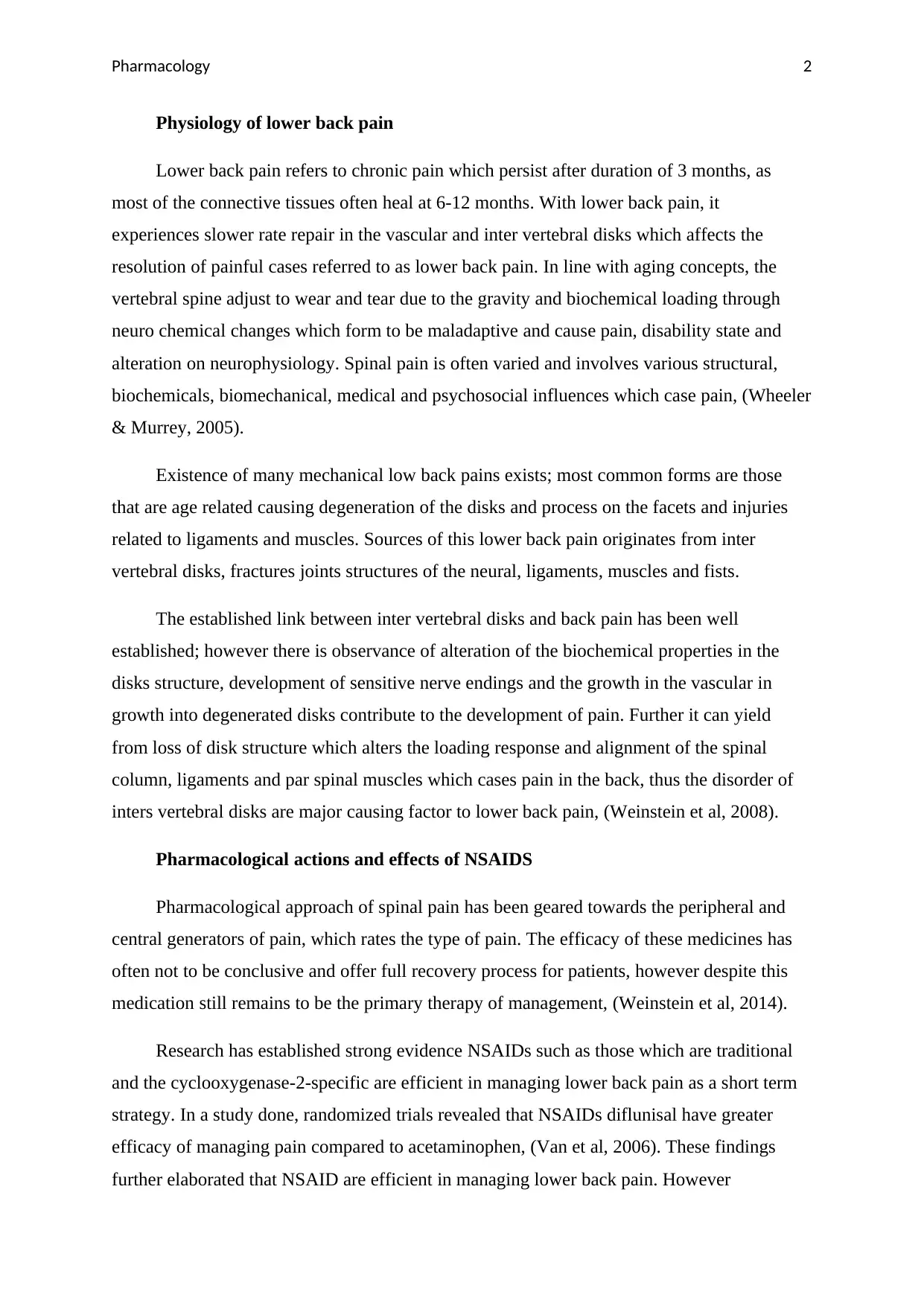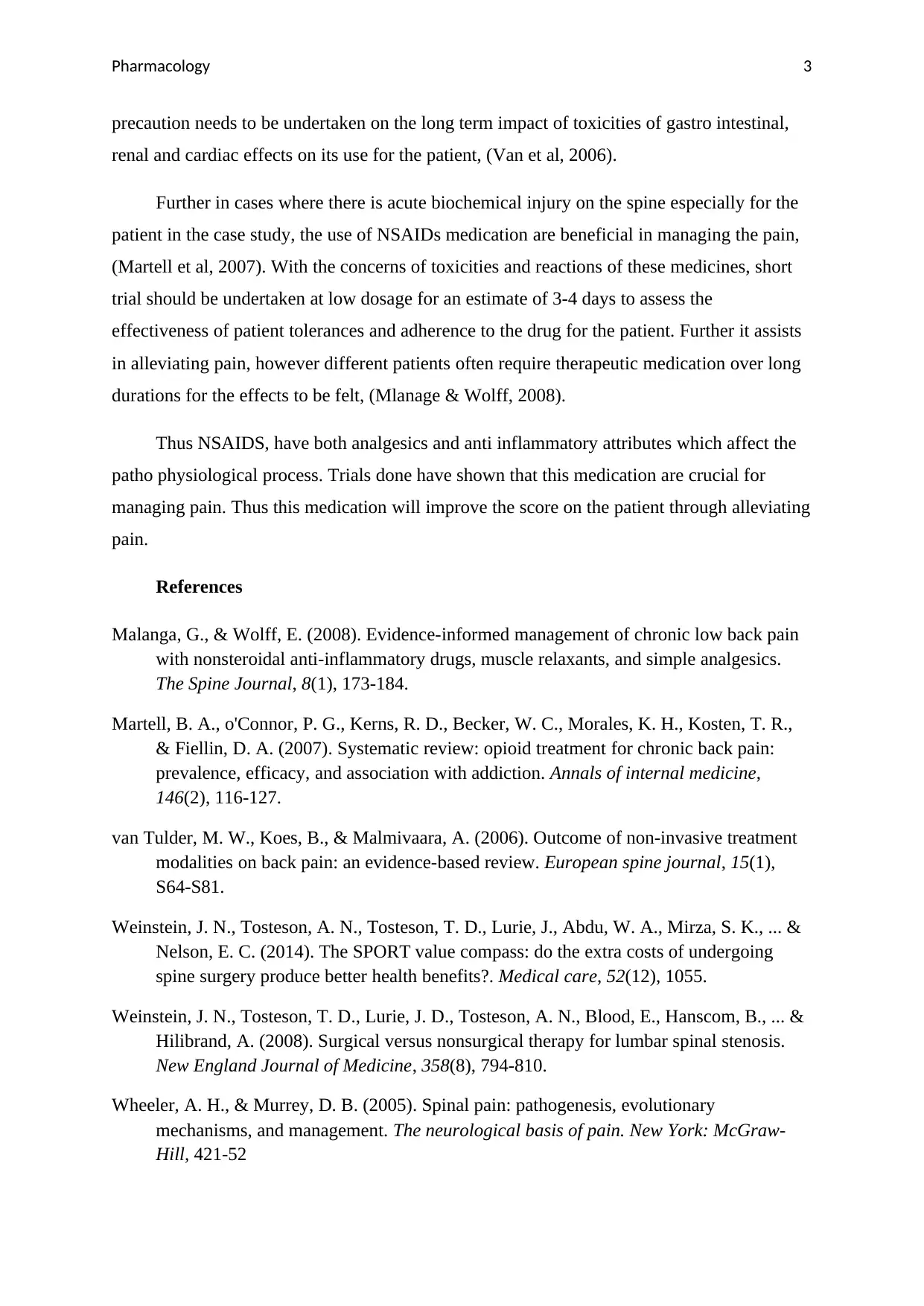COURSE CODE COURSE NAME: Managing Lower Back Pain with NSAIDs
VerifiedAdded on 2023/06/14
|3
|982
|149
Essay
AI Summary
This essay delves into the pharmacological aspects of lower back pain, addressing the physiological mechanisms and the role of Non-Steroidal Anti-Inflammatory Drugs (NSAIDs) in its management. It highlights that lower back pain, often chronic and lasting beyond three months, arises from various structural, biochemical, biomechanical, medical, and psychosocial influences. The essay emphasizes the efficacy of NSAIDs in providing short-term relief by targeting peripheral and central pain generators, acknowledging the potential gastrointestinal, renal, and cardiac toxicities associated with long-term use. It recommends short trials with low dosages to assess patient tolerance and adherence, particularly in cases of acute biochemical injury to the spine. The document concludes that NSAIDs, with their analgesic and anti-inflammatory properties, can significantly improve patient outcomes by alleviating pain, although individual responses may vary and prolonged therapeutic medication may be necessary for sustained effects. Desklib provides students access to similar solved assignments and study tools.
1 out of 3








![[object Object]](/_next/static/media/star-bottom.7253800d.svg)